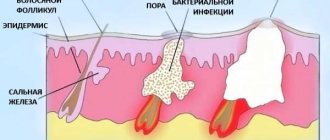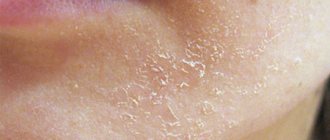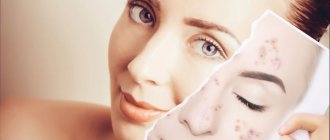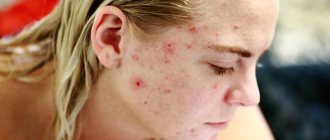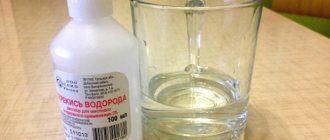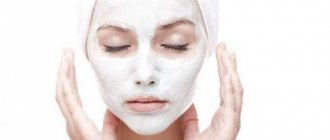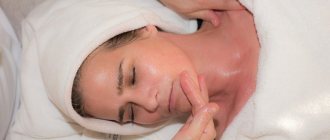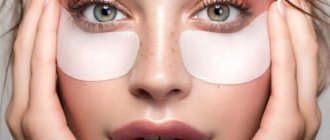Fenugreek
Fenugreek seeds will help get rid of pimples and acne. To prepare the product, you need to add the plant seeds to the water and put them on the fire for five minutes. Wash your face with the cooled broth in the mornings and evenings - and soon you will notice that the condition of your skin improves.
Before using various home remedies to remove acne pits, consult your doctor. This will allow you to choose the most effective option specifically for you and eliminate the occurrence of side effects.
Clay masks
Clay masks have always been famous for their toning, cleansing and restoring properties. To prepare such a mask, take a tablespoon of clay and dilute it with warm water. It wouldn't hurt to add a small amount of rosemary oil to the mixture. The mixture must be applied to the skin and washed off with warm water after a while. The duration of treatment is three months.
And pits, you need to do your best to promote the process of skin regeneration. The damaged area will renew itself over time and become healthy. The most effective way to restore the upper layer of the epidermis is exfoliation. It must be done several times a week. For these procedures, scrubs containing natural particles and extracts are most suitable. Herbal extracts disinfect the skin, relieve irritation, and promote rapid healing of small wounds. Ground apricot kernels are used as granules. Give preference to soft scrubs that will not irritate the skin.
An effective remedy that promotes the resorption of pits
and scarring after, is a clay mask. Pay special attention to green and types of clays. Since they contain a large number of different beneficial substances that are responsible for skin regeneration. To prepare the mask, take about half a tablespoon of green and dilute it with a small amount of water. Mix thoroughly. The result should be a creamy paste. To speed up the wound healing and smoothing effect, add a few drops of essential oil or tea tree oil to the mask. They have excellent antiseptic effects. Apply the resulting mixture to problem areas for about ten minutes. Then rinse off with cool water.
When choosing facial skin care products, give preference to those that contain salicylic acid. It can help old skin peel off, thereby speeding up the process of renewal of the upper layers of the epidermis.
One of the most important stages in the process of skin restoration after acne
is its hydration. For washing, choose light gels without oils, but with natural extracts. Thanks to them, the skin is evened out and renewed.
Acne forms on the skin due to a malfunction of the sebaceous glands under the influence of hormones. They appear in most people, starting in adolescence. After
Their disappearance sometimes leaves scars that cause anxiety to their owner. Problem areas of the skin can be dealt with using folk remedies.
Instructions
Prepare a green clay mask. Dilute according to the instructions on the package. Add rosemary to the prepared mixture at the rate of 5 drops per 1 tablespoon. Apply the composition only to problem areas. Rinse off after 15 minutes. Repeat the procedure every three days for 2 months.
Dilute apple cider vinegar with water in a ratio of 1:3. Freeze the mixture. Rub ice cubes on your face daily. To get rid of old ones, place a napkin soaked in vinegar solution on your face for 5 minutes every other day.
Brew 2 tablespoons of colorless henna with boiling water until it becomes mushy. Close the lid and leave for 15 minutes. Apply the warm mixture to problem areas in a thick layer. Keep it until it dries. Rinse off carefully. Colorless henna cleanses and restores the skin and does not cause allergies.
Mix white clay (two tablespoons), turmeric (half a teaspoon) and burnt (quarter teaspoon). Dilute a third of the finished mixture in water, adding a few drops of lavender oil. Keep the mask on for ten minutes. Repeat 2 times a week until the effect appears. Turmeric smoothes scars, resolves scars, and prevents the appearance of scars. To enhance the effect, you can steam the skin with hot water before the procedure. Better mask
It is known that squeezing pimples leads to the formation of scars on the face. The larger the scars and wounds from acne, the longer it will take for the skin to return to smooth and silky. How to remove acne pits on the face?
Laser resurfacing
According to experts, laser is the most effective procedure for removing dimples on the face. Under the influence of the laser, the layer of scarred skin burns away, and a new layer is formed in its place.
As a result, the skin is somewhat smoothed and rejuvenated. The laser acts precisely on the affected areas. It is necessary to carry out several laser therapy procedures before the epidermis is completely restored.
This treatment is painless, and the healing effect will occur within two weeks.
Methods for treating pits after acne
A dermatologist-cosmetologist is able to find out what type of scars on the facial skin are and prescribe the correct treatment.
- If the pits are not deep, chemical peeling is used.
- For deep, very noticeable acne scars, a procedure such as fat tissue transplantation may be prescribed. Collagen injections may also be indicated. These procedures must be repeated after 1-1.5 years.
- Dermabrasion. A cosmetic procedure in which scar tissue is worn away and the skin is smoothed out. Special cutters and brushes are used to cut off the affected tissue. This procedure is painful and is performed under local anesthesia.
Independent activities
- Masks made from cucumber, aloe, clay, tomatoes, honey with the addition of essential oils.
- Ointments for scars and acne scars (Mederma, Contractubex).
Acne is a fairly common occurrence that occurs especially often during adolescence.
If timely treatment is not carried out, spots may form after acne. They are quite difficult to treat, but if you follow certain rules and use highly effective medications, you can easily get rid of dimples on the skin.
Quite often they occur when hygiene rules are not followed or a bacterial infection develops. This pathological condition is most often observed in those with thin and sensitive skin. If pimples cover large areas or are squeezed out inappropriately, this leads to scarring.
Scars can be hypertrophic or atrophic. Hypertrophic nodes are characterized by an excessive amount of connective tissue formation at the site of the pimple. In this case, the scar is presented in the form of a nodule. If the connective tissue does not completely close the hole, this also leads to the appearance of a scar in the form of a pit.
Atrophic scars are divided into several types. They can be:
- Rectangular. The depressions in the skin have straight edges. The reason for the appearance of such a scar is squeezing out a pimple.
- Rounded. The pits after a pimple have an arched shape that resembles waves. The edges of the scar are smooth. The size of the recesses can be varied.
- Chipped. The recesses are cone-shaped. The walls meet in the middle.
If a hole remains on the patient’s skin after squeezing out a pimple, then it must be amenable to treatment. Scars do not go away on their own.
Dent on the leg below the knee causes
When a hole appears on the leg, only an experienced specialist can definitely say after diagnostics what it is.
Dents can appear both due to pathological internal processes and due to the negative impact of environmental factors. To say exactly why a dent appeared on the legs above or below the joint, you need to conduct instrumental diagnostics and take an anamnesis.
Most often, pits on the legs appear due to the following factors:
- hormonal changes. After childbirth, almost every woman experiences changes in the production of hormones, which can lead to changes in the structure of subcutaneous tissue and fat deposits;
- damage to muscle fibers due to labor;
- receiving a direct blow to the leg;
- muscle injury during sports;
- constant changes in weight (such a disorder can be provoked not only by very rapid weight loss, but also by weight gain);
- lipoma - tumor formations of benign or malignant origin in the fat layer;
- neuropathy of the anterior femoral nerve due to progressive osteochondrosis (this deviation can also develop against the background of a herniated disc);
- pathology of the rectum. With an abscess or paraproctitis, the pressure on the spinal column will be increased, which can cause pinched nerves in the lower extremities;
- spondylolisthesis of the spinal column. The main characteristic of this pathology is a change in the position of the vertebrae, which can provoke a pinched nerve;
- piriformis syndrome. The main characteristic of this pathology is the development of an inflammatory process or hypertrophy of the piriformis muscle. Also, such a disorder is very often accompanied by pinching of the sciatic nerve;
- muscle rupture during sudden lifting of weights or professional sports;
- the presence of inflammatory pathologies affecting the pelvic organs;
- Stage 4 cellulite.
Another common cause of indentations in the legs below the knee or above the joint is constant and prolonged pressure on the tissue. For example, such pressure can be exerted during long workouts at the gym, especially if a person spends too much time on one machine.
It is worth noting that mechanical impact leads to such changes quite rarely (no more than 8% of cases). That is why, if a hole appears on the leg, it is recommended to immediately make an appointment with a doctor, who will tell you what caused the defect and what needs to be done in a particular case.
Diagnostic and treatment methods
According to various epidemiological studies, one or another form of CVI is detected in women from 1% to 40% and in men from 1% to 17% of the total
populations
. The incidence of skin changes during CVI in developed countries varies from 3% to 13%, and active and healed venous trophic ulcers from 1% to 2.7%. Peak
morbidity
in women it occurs at the age of 40-49 years and in men at the age of 70-79 years.
The success of future treatment depends on a correct and accurate diagnosis. The many manifestations of CVI and the presence of several possible causes for the development of the disease dictate the need to supplement the medical examination with what is called the “naked eye.”
The main method for diagnosing venous diseases is duplex ultrasound scanning (USDS), which allows you to determine the location of the affected veins and the nature of the disturbance in venous blood flow.
Additional research methods are rarely used, but in some cases they can significantly affect treatment tactics. These include X-ray contrast venography, computed tomography (CT), magnetic resonance imaging (MRI).
If depressions on the limbs below or above the knee are observed for a long time, you should consult a doctor. Especially in the presence of additional symptoms: muscle tension or pain.
A tibia fracture is an injury to the fibula or tibia, or both, due to overuse. This injury accounts for 20% of the total number of fractures.
Anatomy of the lower leg
The lower leg is a complex of bones and joints represented by the fibula and tibia. The tibia is the larger bone; it takes on the maximum load.
articles:ClassificationCauses, symptomsFirst aidHow to treat, recovery
The fibula is located on the outside and is designed to enhance the stability and strength of the ankle. These bones are also connected to each other below by ligaments, in the middle by an interosseous membrane, and above by a common articulation.
At the bottom of each bone there are protrusions (ankle bones) that wrap around the joint, creating lateral stability.
All diseases are coded according to ICD-10 (international classification of diseases). Knee and lower leg injuries include 10 sections with subsections.
People's legs are susceptible to diseases such as venous insufficiency. Elderly people are more likely to suffer from this disease, but young people are not immune from it either.
The disease is very serious and requires proper and timely treatment. It occurs as a result of poor blood flow or blockage of the veins in the legs. There is an acute form of lower limb insufficiency and a chronic form.
The reasons why the exchange and cycle of blood through the veins is incorrect are many and varied. Hereditary predisposition, when this disease is inherited.
Improper functioning of the valves, when blood does not flow well through the veins of the legs as a result of blockage of the valves. Sedentary work or when a person is in a standing position for a long time.
Taking hormonal drugs can affect the development of venous insufficiency of the extremities. Changes in the human body with its age-related indicators, as well as obesity, negatively affect the functioning of venous valves, and the outflow of blood in the lower extremities of a person is disrupted.
- First of all, swelling of the lower extremities is observed. The legs may swell, often in the evening after a day of work. You can check this symptom by pressing anywhere with your fingers on your legs below the knees; if the dents do not smooth out for a long time, this is a consequence of swelling.
- Severe pain in the lower extremities when walking, possibly in a sitting position.
- At night, when a person is at rest, cramps in the calf muscles may occur. This condition is accompanied by pain. The calves need to be rubbed and the feet warmed.
- Pigmentation occurs in the form of brown spots on the calves of the legs. This occurs more often in older people. The veins swell and hurt, and meshes form from a cluster of small veins. The skin on the legs becomes dry and lumpy.
- If the disease is severely advanced, trophic ulcers appear. They are painful and may bleed. Doctors often resort to cleaning or opening such ulcers.
- Various types of dermatitis and eczema may appear on the patient’s lower extremities. The lower legs become covered with spots or rashes, and often the affected areas are very itchy and painful. The treatment takes a fairly long period.
- As a result of symptoms of lower limb insufficiency, the person may feel dizzy and lose the ability to move independently. There is often a feeling of nausea or shortness of breath.
- Headaches and tingling occur, sometimes numbness in the arms and legs. Feet often get cold, even in the warm season.
Treatment is carried out under the supervision of specialists and can be medicinal or surgical. Operations for ligation or excision of veins are carried out if the disease is in the acute phase or becomes chronic.
If venous insufficiency is not treated for a long time or self-medicated, then patients may lose not only their ability to work and become disabled, but also completely lose the ability to move independently and take care of themselves.
It is important to engage in preventive methods at an early stage. Paying more attention to walks in the parks, swimming, and light physical activity will help cope with the disease.
Proper nutrition is a must. Doctors may recommend losing weight to reduce stress on the lower extremities. It is useful to change your occupation throughout the day.
At certain stages of the disease, experts recommend wearing special underwear or bandaging the affected areas with elastic bandages. This reduces the load.
08/22/2015 at 14:26
It is a pity that the first signs of venous insufficiency are often ignored. For a long time I felt heaviness in my legs in the evening, but did not attach any importance to it.
Now the veins have come out and we have to treat them completely. Fortunately, modern pharmacists know how to help people: I take Phlebodia 600, an excellent drug, you don’t need to drink it several times a day and combine it with other drugs, it helps with a bang.
Source: https://praviloserdca.ru/zabolevaniya-serdca/vmyatina-noge-nizhe-kolena-prichiny
Traditional medicine
In the fight against acne, traditional medicine is often used, which is highly effective. Medicinal products are characterized by ease of preparation and low cost, therefore they enjoy a high level of popularity.
Cosmetologists recommend using tomato in the treatment of scars. To prepare the medicine, you need to take overripe tomatoes and mash their pulp. The resulting paste is applied to the face. You need to keep the cosmetic product for half an hour. This folk medicine is widely used as a tonic after peeling.
One of the reasons for acne is poor hygiene.
Experts also recommend using a clay mask. The folk medicine is prepared on the basis of white clay, 50 grams of which are diluted in warm water. It is necessary to dilute the clay until you get a paste-like consistency. Rose oil is added to it in the amount of 10 drops. Apply the mask to the scar area for 15 minutes. After this time, the mask is washed off with warm water. It is recommended to carry out the procedure once a week. The duration of therapy is 3-4 months.
Oatmeal scrub is useful. To prepare the medicine, you need to take coarse oatmeal in the amount of 5 tablespoons. Pour half a glass of kefir over it and mix thoroughly. It is necessary to apply the medicine to the skin. After applying it, it is recommended to leave the mask on for another 15 minutes, and then rinse with water. It is recommended to carry out the procedure once every three days.
Coffee peeling is prepared on the basis of coffee grounds, which remain after brewing coffee. Sunflower oil is added to it and mixed thoroughly. The mass must be applied to the face for 5 minutes with massage movements. After this, the folk medicine is washed off with warm water. The procedure is carried out once a week. With its help, keratinized epithelium is eliminated, and regeneration is accelerated, metabolic processes in tissues are stimulated, and scars are reduced.
After cleansing procedures, you need to apply a moisturizer to your face. It helps nourish the skin.
Before using a particular medication, it is necessary to determine the presence of allergic reactions to it. That is why it is recommended to consult a doctor before using a certain folk medicine.
Dent on the leg: reasons for the appearance of the depression
If you are forced to be in a static position for a long time - for example, sitting at a computer in the office, observe your own habits. You may involuntarily press your foot against the base of the table or push it against the wall for more support. This constant pressure can cause dimples to appear on the outside of your thighs.
In this case, there is no reason to fear: just change your usual body position, and the hole in the leg will disappear on its own. But there is no need to neglect the symptom either. Constant compression of the thighs impairs blood circulation and can lead to varicose veins.
Habit
Systematic exposure affects many surfaces, including muscles. For schoolchildren, students and other people who are forced to write a lot, a characteristic dent appears at the point where the finger touches the pen (pencil). Similar changes may occur in other areas of the body.
The habit of sitting all working day with your leg resting on a table leg, pressing it against a chair or other relief element, after a few months will lead to a change in the relief of the muscles in the contact zone. The habit of sitting cross-legged can also play a role.
Regular pressure can cause dents above the knee.
Swelling
Our feet regularly experience significant stress. Excess weight, kidney disease, endocrine and lymphatic systems, pregnancy lead to the accumulation of fluid in tissues. In this state they become more pliable. If you wear tight trousers or stockings with a tight elastic band, a depression may form on the front surface of the thigh.
Eliminating the problem must be comprehensive. In addition to treating the underlying disease, it is advisable for people prone to swelling to wear loose clothing, without elastic bands or ribbons.
Edema
Fluid-filled tissues are more pliable than healthy muscles. Indentations on the legs, as well as on other parts of the body, can be the result of edema. They appear with a single pressure or constant impact, such as wearing shoes.
Dents due to swelling do not occur unexpectedly. The disorder is provoked by conditions such as pregnancy, dysfunction of the kidneys and lymphatic system, problems with the thyroid gland, joint diseases or allergies. People usually know about such ailments, so depressions on the surface of the muscles do not come as a surprise.
Femoral nerve neuropathy
This pathology is a dysfunction of nerve fibers. Its appearance may be caused by:
- degenerative changes in the vertebral discs and nerve endings;
- malignant processes in soft tissues;
- hypothermia;
- diabetes mellitus;
- vitamin deficiency;
- infections (brucellosis, influenza, measles, diphtheria);
- vascular diseases;
- retroperitoneal hematomas;
- hemorrhages at the site of pathology due to overload.
Neuropathy often develops in pregnant women due to pressure from the growing fetus on the lumbar spine. The depth of such pits on the thighs is usually at least 10 mm. Depending on the type of nerve fibers involved, the pathology may be accompanied by the following symptoms:
- A nagging pain felt along the entire length of the nerve. Often there is an increase in pain in the area under the inguinal fold.
- Discomfortable sensations on the inner thigh - tingling, goosebumps, decreased skin sensitivity.
- Absence or weak reaction of the tendon knee reflex.
- Swelling in the lower legs - at the level of the knees or ankles.
- Hair loss in the damaged area (not always observed).
- Change in skin tone (mild redness or darkening).
- Muscle weakness, muscle atrophy or paresis. It is observed in the area of localization of the affected nerve, but does not affect other areas.
Clinical manifestations of the disease vary depending on the type of nerve fibers affected - sensory, motor, nutritional. If only one of these groups is damaged, there may be no pain, movement disorders or other symptoms.
Neuropathy requires complex treatment. The patient is prescribed special gymnastic exercises, the diet is adjusted and examined for the presence of concomitant pathologies. Therapeutic massage and physiotherapeutic procedures are useful. To relieve pain and increase the conductivity of nerve fibers, injections of Actovegin, Milgama and their analogues are used.
To treat femoral nerve neuropathy, methods of oriental medicine are actively used - acupuncture, stone therapy, acupressure and cupping massage. The procedures help improve blood supply, saturate tissue cells with oxygen and nutrients, and improve the conductivity of nerve fibers.
Femoral nerve neuropathy is one of the causes of the formation of a depression in the leg muscles above the knee. Dents (depth usually starts from 10 mm) are formed due to incorrect signals given to the muscles. Neuropathy is caused by:
- hemorrhages in the psoas muscle caused by overload;
- lymphomas or sarcomas;
- retroperitoneal hematomas caused by hemophilia or platelet disorders.
Nerves act as causative agents of indentations in the leg muscles and during protrusion of the lumbar spine. Nerve compression caused by overloading the structure disrupts the signal to the muscles.
The condition, according to online sources, is often seen in pregnant women who regularly carry ever-increasing weight in the form of a growing baby.
In addition to other daily stress, this exercise can place excessive pressure on the spine.
Other reasons
There are other potential factors that may cause a person to notice that they have a dimple in their thigh or other part of their leg. So, this may be the natural relief of the muscles. When they are tense, characteristic notches sometimes appear above the knees or on the buttocks. The cause is also hard cellulite.
The condition causes small, systematic indentations to appear over all or most of the surface of the legs.
Pits in the muscles are an unpleasant phenomenon from an aesthetic and medical point of view. There are many reasons for the appearance of unsightly relief on the legs. More serious depressions, characterized by depth (from 1 cm) and accompanying discomfort, usually indicate serious problems, such as swelling, injury or problems with the lumbar nerves.
If a depression appears on the thigh, it is worth checking the influence of other provoking factors:
- muscle injuries during childbirth;
- hematomas caused by strong impacts during sports;
- hormonal disorders that provoked dystrophic transformations of subcutaneous tissue;
- sudden changes in body weight (increase or decrease);
- malignant or benign neoplasms;
- progression of hard cellulite, accompanied by the appearance of symmetrical dimples in the area above the knee or on the buttocks.
THE MOST INTERESTING:
Source: https://sustavrip.ru/ushib/poyavlenie-myshechnoy-vpadiny-nogakh-nizhe-vyshe-kolena.html
Use of medications
Drug therapy has a high effect in the treatment of scars. It must be used as prescribed by a doctor, who will first assess the condition of the dermis.
In most cases, patients are prescribed:
- Dermatix. The drug is developed on the basis of silicone and silicon dioxide. With its help, you can not only treat, but also prevent scars of varying complexity.
- Contractubex. Thanks to the universal components, the drug produces collagen and eliminates small scars.
- Mederma. The drug is widely used for keloids and other types of scars.
- Kvotlan. The cosmetic product is produced in the form of a cream. The drug eliminates a variety of problem areas on.
With the help of medications, the disease can be cured in the initial stages if the scars are fresh.
To ensure the most effective treatment, the prescription of pharmaceutical drugs should be carried out by a doctor.
Use of cosmetic products
In some patients, scars cover almost the entire skin of the face. To level it, it is necessary to use appropriate cosmetic products.
Cosmetic procedures are an effective way to remove scars
Chemical peeling is quite effective. To carry out the procedure, salicylic, glycolic, and trichloroacetic acids are used. They help exfoliate tissue and also stimulate the production of new cells. The procedure should be carried out once every two weeks.
Laser resurfacing will help get rid of it. This procedure removes hypertrophic scars. It is quite painful, but effective. The rehabilitation period is 2 weeks. In order to get the best possible result, it is necessary to carry out 5 procedures. The interval between them should be three months.
The use of microdermabrasion is recommended. When using this method, the device acts on the pits mechanically. Protruding areas are cut off layer by layer using special equipment. As a result, the scar gradually levels out to the level of the skin.
Phenolic peeling is effective. Treatment of scars with this method involves the use of phenol. It helps cleanse the skin, reduce and eliminate acne dimples. After one procedure, the effect is already observed. the patient's skin becomes clean and smooth.
Cosmetic methods for treating scars are quite effective. The choice of a particular one is made by a cosmetologist depending on the condition of the patient’s skin.
Scars are quite an unpleasant phenomenon on the patient’s skin, which remain after acne. To treat them, you can use a variety of products, the choice of which is made by a specialist depending on the condition of the patient’s skin.
The video shows an informative story from a specialist:
Liked? Like and save on your page!
See also:
It is true what they say, the face is the mirror of the soul, and you want it to always have a blooming appearance. But this does not always work out. And the reason for this is the dimples that remain from acne.
Dermatologist, cosmetologist
In adolescence during puberty, as a rule, almost all adolescents develop redness, blisters and other rashes on the skin of the face. They mature, burst and leave scars behind, because the defect site is overgrown not with connective tissue, but with scar tissue. And if you still press on the rash! Then the traces from them will not pass and will bring a lot of trouble to a person. But what to do if there are already scars? *How to get rid of acne pits* forever? Is it possible? Certainly.
How to get rid of a raised mole
Have you been fighting PAPILLOMAS for many years without success?
Head of the Institute: “You will be amazed at how easy it is to get rid of papillomas by taking every day...
Read more "
Moles, or nevi, on the body can be of different shapes and sizes, while flat pigment spots do not cause discomfort and are not a cosmetic defect, while convex growths cause a lot of trouble for their owner. Such growths can often be rubbed against clothing or damaged by household items such as a comb, razor or washcloth, so many people want to get rid of such growths. To choose the most suitable treatment method, you need to consult a doctor who will find out the reasons why raised moles form and recommend a procedure based on the individual characteristics of the patient.
How do bulging nevi appear?
It is believed that moles appear on the body as a result of a congenital skin defect, which originates in the prenatal period. As a rule, there are no nevi on the body of a newborn child; they appear on the face, chest, back, abdomen and other parts of the body only after six months. Convex pigmented neoplasms are formed from melanocytes - cells that produce the coloring pigment melanin, which determines the shade of the skin and the nevi themselves. A pink mole indicates that there is little melanin in the cells, while a brown or black mole indicates its high content. The more melanocytes grow, the more voluminous the nevus grows, and the greater its danger.
The proliferation of melanocytes can lead to the formation of melanoma, a malignant tumor formed as a result of the replacement of healthy cells with pathological ones.
Various factors can provoke the appearance of moles on the body of a child or an adult, and researchers have not yet agreed on which circumstance becomes decisive. However, there are the most common reasons, by anticipating which you can protect yourself from the formation of raised moles in the future. Among the provocateurs of their occurrence are:
- Aggressive influence of ultraviolet radiation. The commitment of many young people to a permanent bronze tan obtained on the beach or in a solarium can turn out to be the other side of the coin. Ultraviolet radiation, absorbed frequently and in large quantities by the skin, can lead to the development of certain pathologies, one of which is the formation of nevi. They appear especially often on the face, back and abdomen - areas that are most exposed to tanning.
- Hormonal changes. An imbalance of hormones can lead to both internal malfunctions in the body and external manifestations on the body. This is especially common during puberty in adolescents or pregnant women. There may also be hormonal diseases, for which you need to contact an endocrinologist.
- Hereditary characteristics. Some moles appear in a child or adult on the same areas of the skin where they were located on his close relatives - on the face, back, stomach, arms or legs. Not all nevi have hereditary characteristics; the set of neoplasms on the body of each person is unique.
- Pathologies of internal organs. Some disorders of the internal systems of the body can also lead to the appearance of convex pigmented neoplasms. This can be caused by diseases of the colon, disorders of the pancreas, imbalance of lipid metabolism and dermatological pathologies.
What is the danger?
In addition to the fact that a flat mole is usually not damaged and does not cause discomfort, while a convex neoplasm, on the contrary, is often subject to trauma, it also poses a potential danger. Convex nevi on the body, more often than flat ones, undergo malignancy - the process of degeneration of a benign growth into a malignant melanoma tumor.
This pathology is classified as oncological diseases, but it is not a cancerous neoplasm. Melanoma is formed as a result of the uncontrolled proliferation of melanocytes, which replace healthy cells. Gradually, if not treated, melanocytes enter the blood and spread throughout the body, forming metastases in vital organs. In this case, the probability of death is close to 100%, but if you take the necessary measures in time, while melanoma is still at the initial stage of development, you can most likely cure it without consequences.
The proliferation of melanocytes is clearly visible in photographs, which show an uneven black spot occupying the area of the mole and the adjacent areas of the skin; this is melanoma. Thanks to the characteristic changes in benign nevi, you can independently recognize the pathological process and consult a specialist in time. Signs of malignancy include:
- change in size, color or shape of the tumor;
- the appearance of cracks on the surface of the nevus and the release of blood or other liquid from them;
- suddenly and sharply the mole became convex;
- hair that was not there before began to grow from the growth;
- asymmetrical shape;
- the appearance of blurred, uneven, jagged edges.
Locations
Convex moles usually do not form on the face; flat pigment spots predominate in this area. Sometimes tumors appear on the chin or in the area above the upper lip, but in most cases they are located on the scalp. Removal of convex nevi in this case is dictated mainly by the psychological side of the issue, since they are a cosmetic defect.
More often, such neoplasms are localized on the body - the back, arms, neck, legs, armpits, etc. The danger of such moles, in addition to the possibility of malignancy, is that they can often be rubbed with clothing or damaged by household items, especially in a child. Some experts recommend removing such tumors for preventive purposes.
Is it possible to remove a mole yourself?
You can often find recommendations for certain folk recipes that help get rid of a convex nevus without seeing a doctor. However, it should be understood that you cannot try to get rid of a mole on your own, especially if the neoplasm is localized on the face, back, abdomen or other parts of the child’s body.
Self-removal most often turns out to be incorrect and inappropriate, as a result of which the tumor on the body is only damaged and then quickly transformed into melanoma. The child’s body is most vulnerable to negative factors, so self-medication can seriously harm the child’s health. Even if the home procedure is performed by a medical professional, this does not guarantee the absence of complications and relapses. Convex moles can only be removed by a qualified specialist in a specialized medical institution licensed to carry out such activities.
Removal methods
Modern clinics can offer their clients a choice of several effective methods to get rid of convex nevi on the face, back, chest, abdomen, neck and other parts of the body. Only the doctor can choose the appropriate method during a preliminary consultation based on the patient’s medical history and the individual characteristics of his body. The signs of a mole are also taken into account, for example, whether it is pink or dark, large or small, single or multiple.
A folk recipe will get rid of papillomas. Take the simplest...
This is what our grandmothers did. The warts will go away in 10 days. Just take...
One of the popular methods is laser therapy; it allows you to painlessly remove benign tumors on the face, back, chest, neck and other parts of the body of a child or adult. The laser beam removes the nevus layer by layer, without bleeding or scarring.
Another effective method is cryotherapy, in which a convex mole is exposed to low-temperature liquid nitrogen. It freezes the growth, causing it to peel off from the skin within 1-2 weeks. The method is suitable for removing tumors on the face, chest, neck, abdomen, back and other parts of the body of a child or adult.
You can get rid of convex nevi using electrocoagulation, which involves exposure to an electrode in the form of a loop. He cauterizes the mole and cuts it away from the skin, after which there is no bleeding and in most cases no scars are left unless the mole is too large.
If the tumor begins to transform into melanoma or grows to too large a size, the doctor can only prescribe surgical intervention. During the operation, a raised mole is excised with a scalpel along with a small adjacent area of healthy skin. The rehabilitation period lasts quite a long time, and scars often remain after it.
Traditional methods
In folk medicine, a lot is said about *dimples after acne and how to get rid* of them. Grandmother's methods are the most popular, accessible, and inexpensive. These recipes are easy to use at home, using what you always have on hand:
- oatmeal scrub with kefir. 5 tbsp. pour 100 grams of coarse oatmeal. kefir Keep on face for 15 minutes. Rinse with water. It is recommended to do it 2 times every 7 days;
- coffee peeling Take the grounds left after brewing coffee, add 1 tbsp. sunflower oil. Distribute the mixture on the face and massage the skin from the nose to the ears. After 5 minutes, wash off. Do it once a week. This procedure will cleanse the face of keratinized epithelium, stimulating metabolic processes in tissues, speed up regeneration, and make pits less noticeable.
- white clay mask. Dilute 50 gr. clay with warm water. Add 10 drops of rose oil to the prepared paste. Apply to problem areas. Keep for 15 minutes. Rinse off. This procedure should be carried out 2 times every 14 days for about 3 months.
- mask of overripe tomatoes. Apply mashed tomato pulp to your face. Keep for 20 minutes. Useful as a tonic after peeling.
Creams and ointments smooth out dimples well:
- contractubex – stimulates collagen production, removes shallow skin defects;
- dermatix - contains silicone and silicon dioxide. Used to prevent scars of any complexity;
- Mederma – effective for keloid scars.
These drugs cope with the disease in the initial stage, when the scars are fresh. It is better for them to be prescribed by a dermatologist.
Dent on the thigh: causes, symptoms, treatment and photos
If you are forced to be in a static position for a long time - for example, sitting at a computer in the office, observe your own habits. You may involuntarily press your foot against the base of the table or push it against the wall for more support. This constant pressure can cause dimples to appear on the outside of your thighs.
In this case, there is no reason to fear: just change your usual body position, and the hole in the leg will disappear on its own. But there is no need to neglect the symptom either. Constant compression of the thighs impairs blood circulation and can lead to varicose veins.
Possible consequences
In more than 80% of cases, dimples on the legs above or below the knee do not pose a threat to health and often go away on their own after eliminating the original source. Recovery usually takes from 2 to 6 months.
Complications, as a rule, develop if failures appear due to destructive changes in the spinal column or due to the development of neuropathy. Such diseases require immediate professional treatment.
If you do not pay attention to the deviation and do not take any measures, there is a possibility of developing anemia in the affected area. If the failure is due to a hernia, lack of treatment can lead to deterioration of sensitivity, impaired motor function and atrophic changes in muscle fibers.
Also, hormonal disorders are dangerous for the female body, which, in the absence of timely treatment, can provoke extremely serious complications, including dysfunction of the reproductive system and the development of infertility.
To ensure that seemingly harmless failures do not cause serious health problems, if they occur, you must immediately make an appointment at the clinic and undergo a full diagnosis.
In the vast majority of cases, dents on the right or left leg above the knee go away on their own or after eliminating the conditions that provoked their occurrence.
More serious problems may develop if a dent or dip in the thigh to or below the knee is due to degenerative changes in the spine and the development of neuropathy.
Without adequate treatment, this disease can lead to constant pain and numbness on the front and side of the thigh.
A disc herniation can cause not only sensory, but also motor disorders with weakness in the legs and atrophic changes in the muscles.
In addition to dimples on the legs, hormonal imbalances often manifest as delayed functioning of the female genital organs and infertility.
To prevent initially harmless dents on the legs from becoming a serious problem, it is necessary to promptly seek medical help and undergo a series of examinations. You should not try to independently remove a dimple on the thigh that has appeared under certain conditions, since it can signal serious problems in the body.
Nutrition
The causes of dimples on the sides of the buttocks can be very different. Often it is not genetic predisposition, but a person’s lifestyle that plays a fatal role. If you abuse alcoholic beverages and eat a lot of sweet flour products, then this will definitely affect the external condition of the body and the functioning of the body's systems. Experts recommend avoiding the following products:
- Alcohol. It destroys vitamin C, which leads to skin aging and cellulite.
- Black tea and coffee. Despite their good reputation, these drinks contribute to fluid stagnation in the body.
- Sweet and flour products. They are rich in fast carbohydrates, which instantly raise blood sugar and contribute to weight gain.
- Salty and spicy foods. Increase the likelihood of edema and fluid retention in the body. Recent studies show that people who frequently consume salty foods have a significantly increased risk of cellulite.
